"One sheep, two sheep, three sheep...a hundred sheep..." Because "sheep" sounds a lot like "sleep", people think that counting sheep can achieve the effect of self-hypnosis, and then this lovely "homonym" "Stalk" spread from the West to the East, and it has become a common sleep method all over the world.

Have you ever thought that while you are silently counting sheep to fall asleep, the lambs are also working hard for your sleep!
The board game (Sheepy Time) takes us into a dreamlike world with a very creative theme background, where players will play the role of lambs, trying to jump the fence, escape the pursuit of terrible nightmares, and help people enter the sweet dreamland.

The gameplay rules of "Sheepy Time" are very simple, suitable for 1-4 players (SOLO is possible), and you can get started quickly with zero foundation.
The game is played on a cute blue-and-white, cloud-shaped, circular board, divided into 10 even areas marked by numbers from 1 to 10. There is a fence between the numbers 10 and 1. The lambs have to keep jumping over the fence to get points, and the nightmare will also go on the field to chase the lambs.
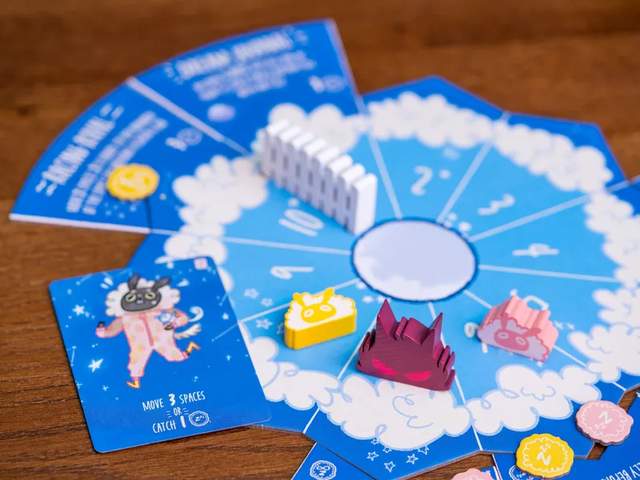
Each round of the game is divided into two stages. The first stage is the running and jumping stage. Players play one of the two cards in turn and execute the action on the card. Move the lamb a certain number of squares clockwise on the board, or/and place a doze marker on a sleep tile on the outer edge of the board.
If there is a sleeping tile outside the area where the lamb arrives, and there is its own temporary or permanent dozing mark on the tile, you can discard a temporary dozing marker (permanent marker does not need to be discarded), and activate the special ability of this sleeping tile, such as obtaining additional move or play another card, etc.
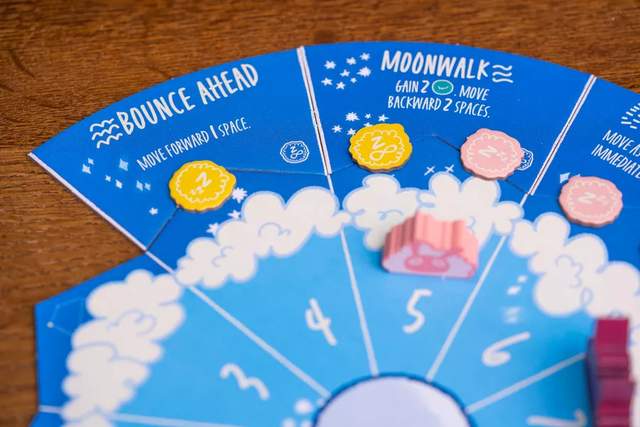
Each time a player's lamb jumps over a fence, it earns 5 points and moves its snooze token five spaces forward on the scoreboard. At this point, the player will be faced with a choice: announce to sleep, keep the points already earned, but give up running the circle and move forward; or risk being chased by the nightmare to move on and earn more points.
Nightmare is the most feared existence by lambs. There are three types of nightmares, wolf, ghost and spider, with different abilities. Before starting the game, you can choose one to become the nightmare of this game.

In addition to sheep cards, there will also be N nightmare cards mixed in the public library. Anytime, even in the first round, as long as the player draws a nightmare card, he must immediately reveal and resolve its effect, and then continue to replenish his hand to 2. open.

The effect of the Nightmare card is generally to make the Nightmare move forward or back N blocks. The lambs in the area that the Nightmare actively passes through will be frightened and fall down. When the downed lamb is frightened again, it will wake up immediately and be punished—— The player who wakes up immediately ends the game and clears the score of the current round.
The run and jump phase ends when all players choose to fall asleep, or are woken up, or the nightmare has crossed the fence.

Then the score is calculated according to the position of the player's snooze indicator on the scoreboard. The first place gets 10 points, the second place gets 7 points, the third place gets 5 points, and the player who is awakened can also get 3 points. Move the pillow counters based on the score and put the snooze counters back to the starting point. In other words, the score of the pillow mark is permanent~
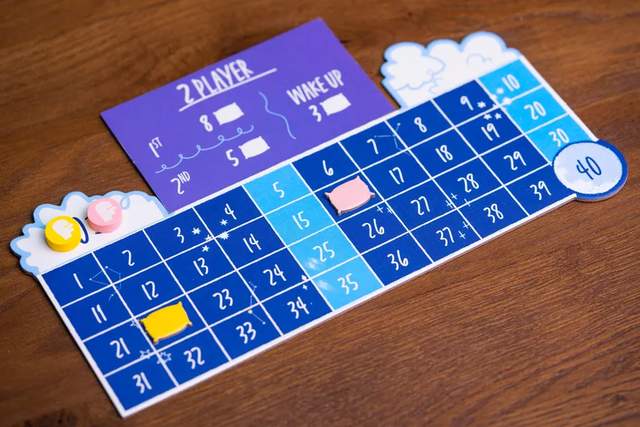
When the player's pillow and snooze mark do not meet, enter the rest phase and prepare for the next round. During the resting phase, players can choose one of the open sleep tiles to place on the outside of the board, and place their own doze markers on it; or choose to place two doze markers on any existing sleep tiles.
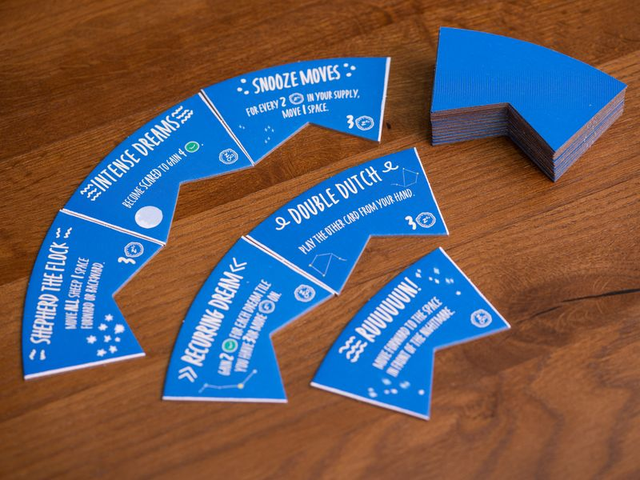
The number of rounds of the game is not fixed. As long as one player's snooze counter meets the pillow counter, the game will end after the current round is over.
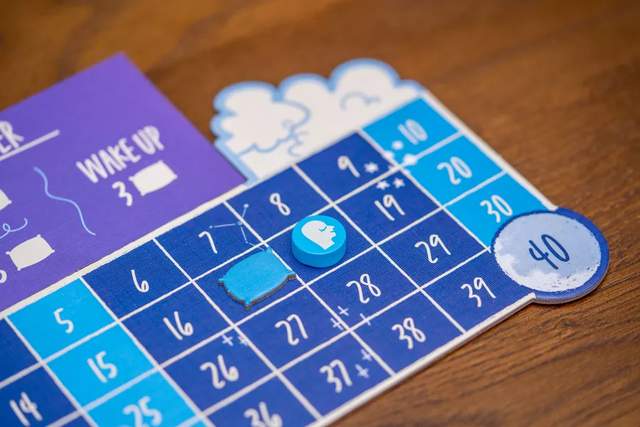
light game competition
The core mechanism of "Sheepy Time" is to formulate a movement plan through hand card management, decide how to make the lamb move, when to place a sleep mark in which area to form a linkage with your own movement, and which sleep plate to choose to improve yourself during the rest phase. mobile efficiency.
Players can't predict when they will draw the terrible nightmare card, so Sheepy Time will inevitably be affected by a lot of luck, and it is essentially a game of luck.
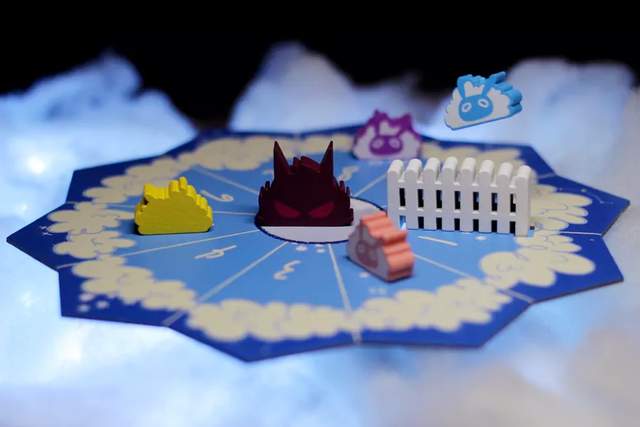
Especially when the player's lamb crosses the fence once, whether to choose to sleep and keep the score, or to move on, is a test of whether to gamble on luck.
Regardless of where the Nightmare is currently, when other players draw cards, it is possible for the Nightmare to move and wake up those lambs that haven't fallen asleep. Nightmare is not just a boring NPC, every action of it will affect all players, not just the current player, with a strong sense of interaction.

There are only 10 steps from the start to the end of the game, and a few cards can easily cross the fence. A word of "greed" may be very rewarding, or it may instantly make a whole round of efforts come to nothing.
Thirty sleep tiles have various abilities. Players can choose and place them according to their own scoring strategies during the rest phase, and play as many Combos as possible.

The difference in the number of players also has a greater impact on the game. When there are a lot of people, the probability of drawing a Nightmare card in one round will also be greatly increased. In short, the game strategy will continue to change according to the type of nightmare and sleep blocks selected and the number of players. These various arrangements and combinations greatly improve the replayability of the game.

If you're confident in your luck and strategy and want to be the center of the crowd at parties, don't miss out on this super cute board game!


Facebook:@czyy.me
E-mail:service@czyy.me
